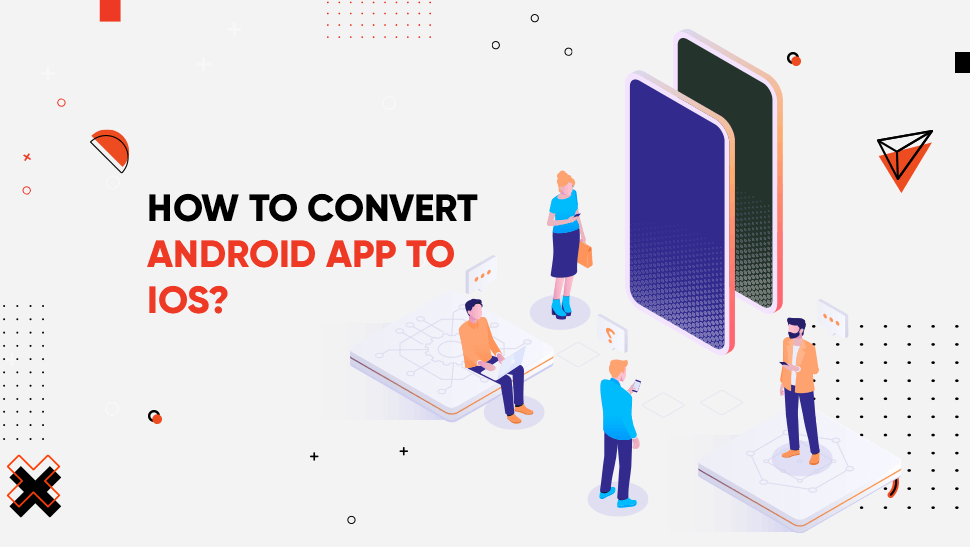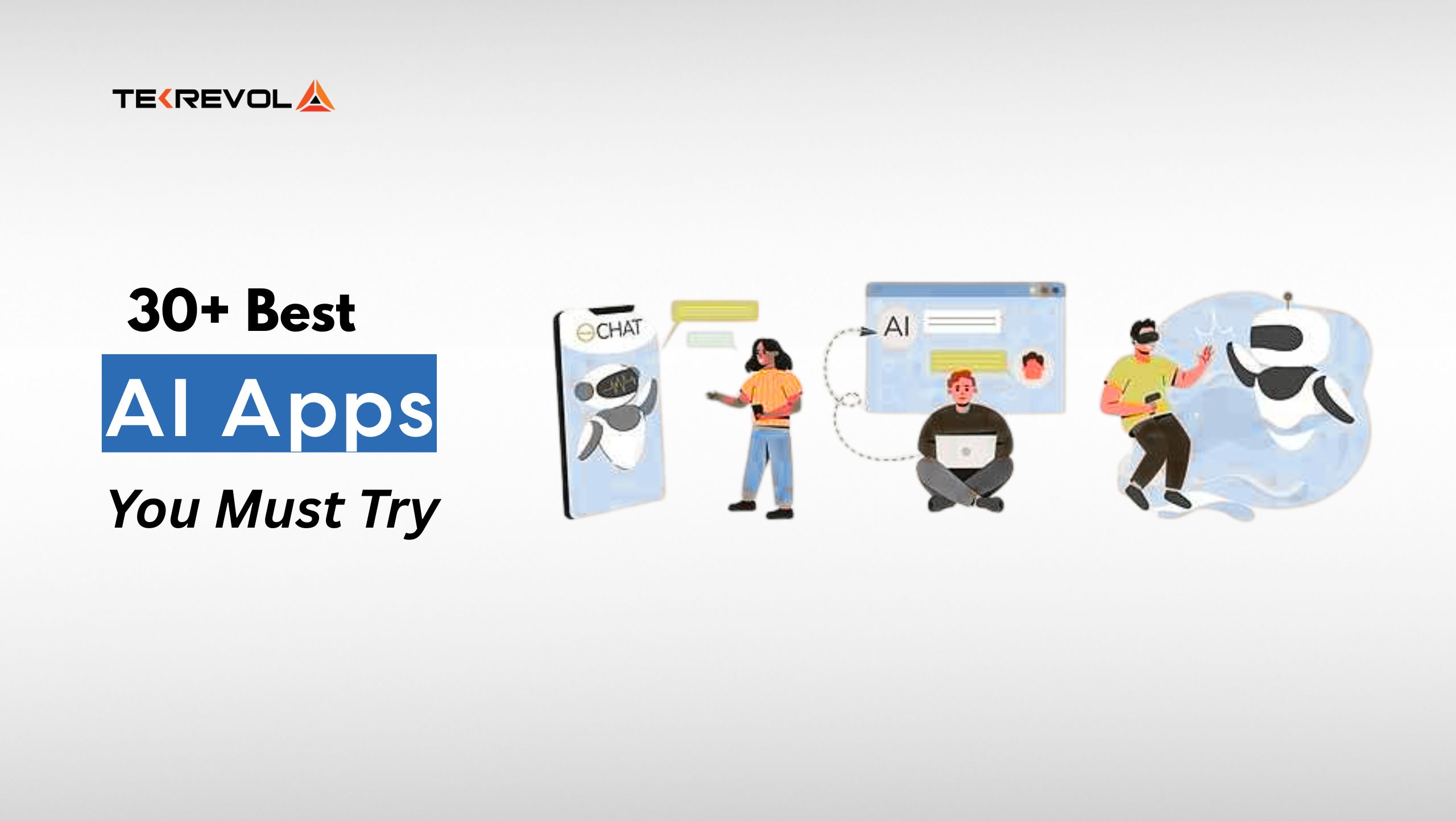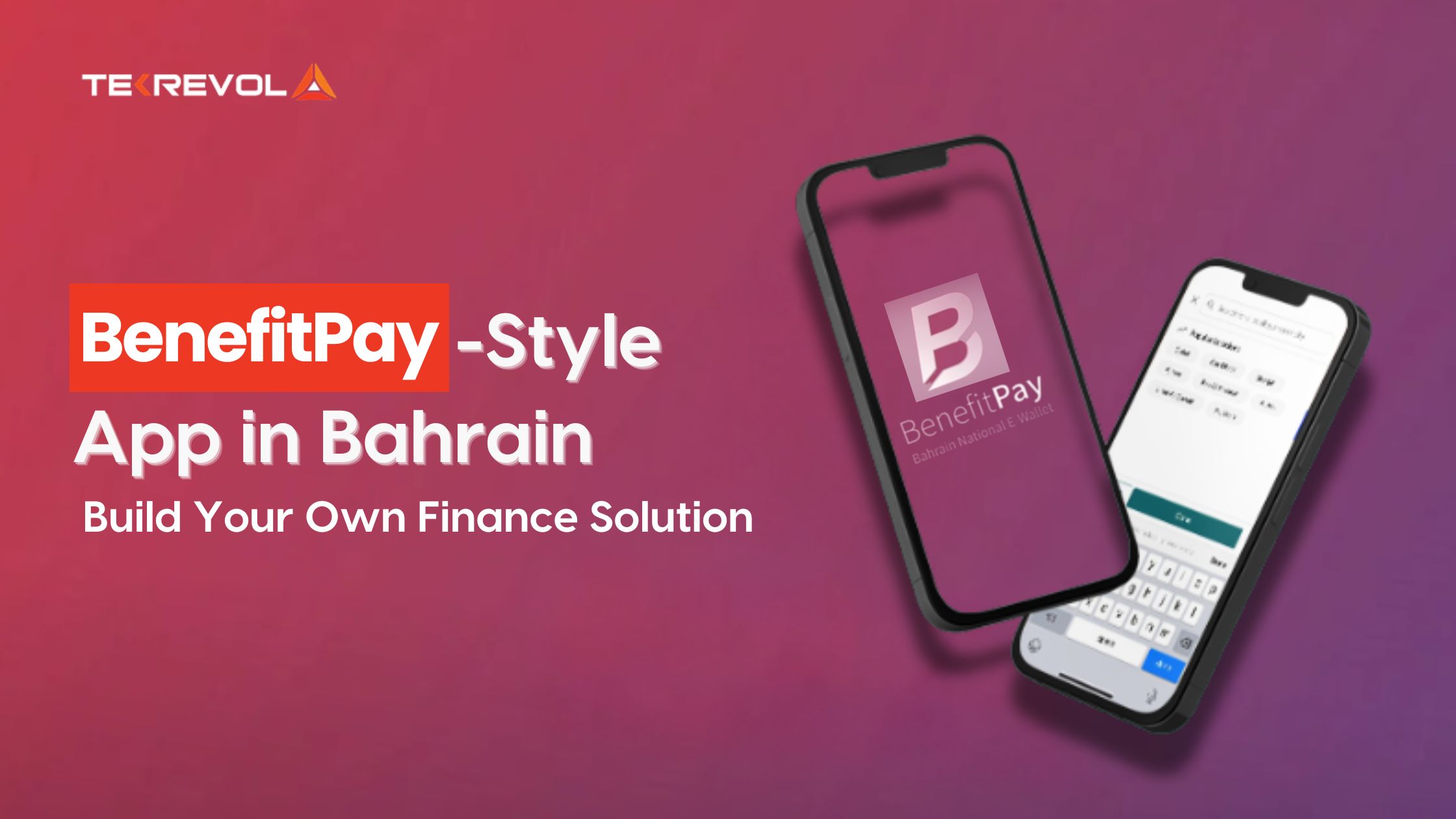Are you searching for an easy way to convert Android apps to iOS? Then this is the only 4-step guide you need.
If you’re about to convert your Android app into an iOS app then I guess your app is among the ones that are famous with the Android audience. Now, it’s a good strategy to examine and study the iOS market before you step into it; because there is a chance your app isn’t according to Apple standards.
A famous example is Instagram, a photo, video, and story-sharing social media mobile app. The app was first available on iOS and then later it expanded into the Android market.
It just goes to show that if Instagram can do it, then so can you, even if its vice versa. So, how do you convert Android app to iOS or the other way around?
Today, I’ve provided you with a checklist of things you need to do before your start the conversion and while the app is being converted.
Here are the four steps you need to keep in mind when you convert Android app to iOS.
- Step # 1: Assess the requirements and functionality needed for the app
- Step # 2: Modify the app design according to the platform guidelines.
- Step # 3: Alter the coding and architecture components as per the new platform.
- Step # 4: Plan a rigorous testing and app launch.
- Are you looking for someone to convert Android app to iOS for you? Tekrevol has got your back.

Why Do Brands Convert Android App To iOS?

Before I get into the “how to convert Android app to iOS,” I want to talk a little about why and when brands decide to convert their mobile app. The following points will help you see if your mobile app is ready for conversion.
Here’s what you need to look at when you convert Android to iOS.
1. Study The Metrics Of Your Android App
It’s wise to understand how your Android app is performing before you decide to convert Android to iPhone. Here are some indicators you can use to analyze the performance of your current mobile app:
- The number of downloads.
- The number of active users.
- The number of daily active users.
- The retention rate to see how many users choose to stay.
- The churn rate to see the users abandoning the app.
- The number of active sessions, daily and monthly.
- The profit your current mobile app is generating.
If the metrics indicate positive results then it’s safe to convert Android app to iOS.
1. Evaluate The New Market
Imagine this, would you try a new face product without checking out its reviews and reading up on the ingredients? Of course not. It’s the same deal with a mobile app.
No user will want to try a mobile app right off the bat, they will need time and the motivation to try your app; which means you can’t convert Android app to iOS until you know the new market will accept it.
The wise thing to do is to study the needs of your new target market. Search the App Store to see if an app like yours exists and then proceed with the app conversion. If your Android app has the 90% of your audience, there is no point in expanding; however, if expanding to another platform can bring you good businesses, then convert away.
2. Attract More Business
The most probable reason to convert Android app to iOS app is to attract more business and gain more profits. Who doesn’t love maximizing their profit? If your Android app is generating a profit surplus, that’s an indication that you’re doing something right because Android users aren’t big spenders.
If you expand to the iOS audience, you’ll only increase your chances of increasing your profit margin and becoming more famous on both platforms.

Android vs. iOS – The Differences When Converting The Mobile App?
If you were thinking about running your Android app for the iOS audience, I think you already know the answer to that. It’s practically impossible to run the exact same app on Android and iOS without a few tweaks, even if it was built on a cross-platform framework.
Apart from the visible difference in programming languages, the other significant difference is the unique native components each platform has. To put it simply, there are some components that are unique to Android, and there are some components unique to iOS. It is important to meet the entire criteria for the mobile app to function smoothly.
Let’s look at some differences between the two operating systems conquering the market, currently.
The Fragmentation
It goes without saying that your mobile app needs to fulfill the requirements of the current version of the operating system in the market. We all know both platforms have undergone some significant changes, and your mobile app needs to be tailored according to that.
While that’s wise, you also need to take into account the OS versions that are still famous and running among the users. If you’re going to convert iOS app to Android, then that will be a doozy because with Android, there are still people who use versions between Android 5.1 to Android 7.0.
However, if you want to convert Android app to iOS then you work should be cut in half, because iOS users upgrade to the newest version quicker than Android versions. Your concentration will be on the top three used operating system versions of iOS.
The Different Screens
While iOS only have a couple of screen sizes, the same cannot be said for Android smartphones. iPhones are only built and sold by Apple and no one else has the right to that; however, as we can see, there are numerous manufacturers of Android phones.
When you’re converting a mobile app from iOS to Android, you’ll need to consider the various smartphone screen sizes, especially the ones belonging to popular brands.
In the case of converting Android app to iOS, there are a handful of screen sizes to consider, especially because not many people use the older iPhone versions like from iPhone 4 to iPhone SE.
The Navigation Controls
The buttons and navigation controls are completely opposite on both platforms. When you convert the Android app to iOS, you need to make sure you work on these minute details before you launch.
The common button and navigation control for Android users are on the bottom of the screen, while the controls for iOS users are on the top of the screen. If you forget to consider these differences, you could risk negative feedback and annoyed users.
The Different Programming Languages
Most people believe they only need to translate the codebase to convert Android apps to iOS, which is a delusion. That’s not the way it works, because both platforms have completely different languages. It’s exactly like how Spanish and English are different languages – they can’t just be translated easily, right?
The requirement for iOS apps in Swift or Objective-C and the requirement for Android apps is Java or Kotlin.
Both kinds of apps require different developers who have command on either language. There are very few developers who can do both; however, if you need an all-in-one developer then build a hybrid mobile app and hire a React Native mobile app developer.

How To Convert Android App To iOS?
Step # 1: Assess The Requirements And Functionality Needed For The App
Before you start to convert the Android app to iOS, there are lots of little details you need to consider, you need a comprehensive plan.
Study the codebase of your existing mobile app and collect data like:
- The functionality controls.
- The specifications.
- The design of your app.
- The source code.
Once you have all these minute details, you’ll have a clearer picture of what the mobile app should look like on iOS.
Hire a business analyst and a custom software architect to help you break down your project into business and technology. The resources will help you fill the gaps, and ensure an app that is functional on the new platform.
Here’s how you can improve the technical side of your mobile app:
- Think of ways to optimize your app to improve the functionality.
- Apply your business logic to your mobile app.
- Integrate your mobile app with other frameworks to make it better.
The other things you can do to understand the app requirements are:
- Thorough market research.
- Use Work Breakdown Structure or (WBS) to organize all your tasks in order.
- Create a map for the mobile app development process.
- List down the features, their description, and importance.
- Review the code with a keen eye.
- Review the design to make it better for the existing and new platforms.
Step # 2: Modify The App Design According To The Platform Guidelines.
Since you are building the app from scratch anyway, you should also consider building the mobile app design again. In fact, take this as an opportunity to improvise your design and try not to copy the existing UI because that won’t work.
Material & Flat Design Patterns
Android and iOS use different design patterns; they are a way to describe a problem, present and apply a solution, then analyze the changes.
Android apps use material design patterns; while iOS apps use flat design patterns. The design patterns are different because they make a big difference in how developers place elements and objects to build an app when you convert an Android app to iOS.
The User Interface (UI Design)
The UI design of both platforms is very different and needs to be taken into account before a mobile app is finalized. There are various differences between the interfaces like:
- The back button placement.
- The design patterns.
- The navigation bar.
- The floating buttons.
- The main navigation with home and other controls.
- The tabs.
- The notifications.
- The button design and patterns.
- Icon type and style.
- The search bar.
- The activity boards.
- The UI controls.
The Unique Fonts
Another thing to consider when you convert Android app to iOS, is the fonts. Both operating systems use unique fonts and it’s important to follow those only.
Android uses Robot, while iOS uses San Francisco, New York, Houston, Chicago, Miami, and Austin.. Developers have the option to choose their own fonts if it’s very necessary, otherwise, it’s wise to stick to the original ones.
UI Mirroring For RTL Languages
When you convert the Android app to iOS, you need to make sure that your content is displayed according to the platform requirements. The term RTL languages refer to the support from Arabic to Hebrew languages.
There are some users who prefer languages other than English, and the content of your mobile app needs to fit those requirements.
Slice The Design Before Conversion
Once the design and idea are set in stone, the next thing to do is slicing the design into different assets. The step will developers integrate the design with the relevant code when they convert the Android app to iOS or vice versa.
Step # 3: Alter The Coding And Architecture Components As Per The New Platform.
Like I’ve said before, when you convert an Android app to iOS you need to write the entire code from scratch and every aspect needs to be tailored according to the new platform. If you fail to do so, you could end up with a buggy and useless mobile app.
We talked about how programming languages are different for Android and iOS, likewise both platforms also have unique libraries, solutions, and third-party integrations. These are the components responsible for how the controls and navigations on your mobile app work; which makes the crucial.
However, there are some things that you can use for both platforms:
- Payment Methods: PayPal, Braintree
- Analytical Tools: Mixpanel, Google Analytics, Fabric, Crashlytics
- Social Network Plugins: Facebook, YouTube, Instagram, LinkedIn, Twitter, Google, etc.
- Postal service: EasyPost, FedEx, etc.
Step # 4: Plan A Rigorous Testing And App Launch.
A mobile app can only be deemed as great if it’s tested and checked thoroughly before the launch. Imagine if you were to cook for the president but forgot to check if you added salt to the food. How would that make you look?
Likewise, if you decide to forget about the testing phase, then you’re only setting yourself up for failure. Here are some tests you should run to ensure your mobile app is top quality, functional, and work smoothly.
- Functionality testing
- Security and access testing
- Controls and navigation testing
- Performance and load time testing
- Usability testing
- Validation testing
- User acceptance
Submit the app to the store once you’re certain it’s up to Apple standards, to ensure it gets approved quickly.

How Much Does It Cost To Convert Android App To iOS?
The process to convert Android apps to iOS is quite similar to building an Android app from scratch; however, the method isn’t the same. The procedure holds some similarities like designing, slicing, tweaking, and testing but the cost differs because of the different platforms.
An iOS mobile app requires a lot more time; hence the hourly rate is higher which is why it might cost more than an Android app.
With that said, an iOS app can prove fruitful if done right because you can monetize more with an iOS app than an Android app.

 2772 Views
2772 Views March 22, 2021
March 22, 2021









